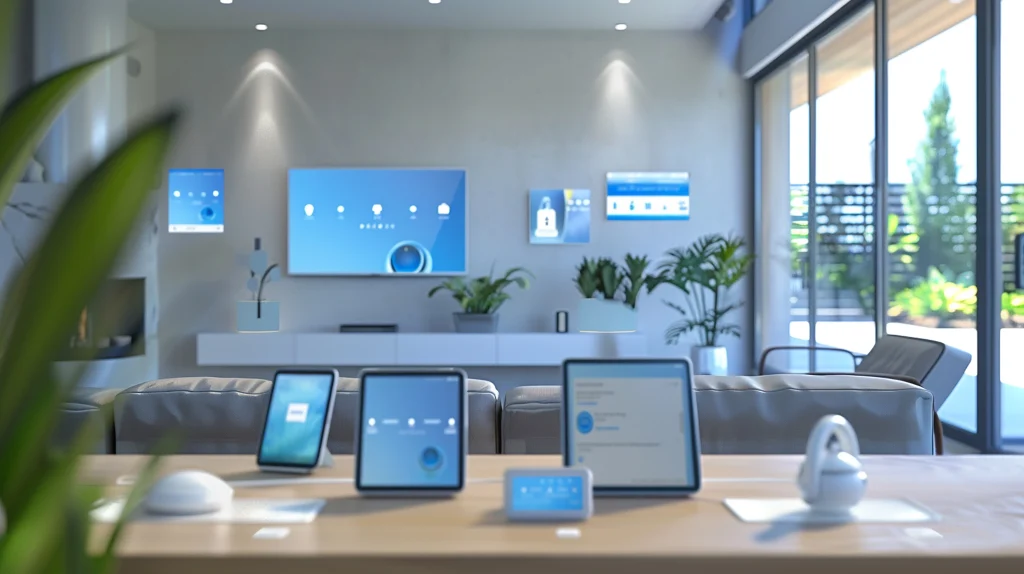Introduction
As we approach 2025, the facility management landscape is on the brink of transformative changes. The global facility management market is not just growing; it is dazzling worldwide, projected to expand at a significant compound annual growth rate (CAGR) of 13.5% from now until 2030. This growth can be attributed to various factors, including the increasing demand for facility management solutions integrated with intelligent software and the rapid adoption of advanced technologies like the Internet of Things (IoT).
In this article, we will delve into the key trends, challenges, and opportunities shaping facility management in the coming years. From technological advancements to evolving workforce dynamics, this comprehensive analysis will provide insights that will enable facility management professionals to navigate the changing landscape effectively.
The Rise of Smart Building Technologies
One of the most significant developments driving the growth of facility management is the integration of smart building technologies. As organizations increasingly seek efficient and sustainable solutions, the demand for intelligent software solutions will continue to rise. Smart building technologies leverage IoT, providing real-time data that can optimize operations, lower costs, and enhance occupant comfort.
Facility managers will need to focus on implementing advanced building automation systems that can manage everything from HVAC and lighting to security and energy usage. The intelligent integration of these systems allows for better energy efficiency, reduced operational costs, and improved occupant experiences.
Moreover, predictive maintenance technologies will become crucial as they allow facility managers to anticipate equipment failures before they occur. By utilizing data analytics and machine learning algorithms, managers can schedule maintenance proactively, minimizing downtime and extending the lifespan of crucial building systems.

The Evolving Role of the Facility Manager
As the facility management industry evolves, so too does the role of the facility manager. No longer just responsible for maintenance and operations, their role is expanding to encompass strategic thinking and business acumen. By 2025, facility managers will need to align their activities with organizational goals and contribute positively to the bottom line.
One aspect of this evolution is the increasing emphasis on sustainability. Facility managers will take on more responsibility for implementing green practices and ensuring compliance with environmental regulations. This will include adopting renewable energy solutions, optimizing resource usage, and working towards certifications like LEED.
Facility managers will also need to develop skills in data analysis to interpret insights from smart technologies effectively. The ability to understand and act upon data-driven recommendations will be essential for making informed decisions that improve both operational effectiveness and occupant satisfaction.
Market Growth Driven by Organizational Changes
The facility management market is poised for significant growth due to several organizational changes. As businesses adapt to new working environments—shifts brought on by the COVID-19 pandemic—facility management solutions have proven invaluable in creating safe workspaces. The pandemic has accelerated the adoption of flexible work arrangements, prompting a reevaluation of space utilization.
Facility managers will need to ensure that their facilities are adaptable enough to accommodate remote and hybrid working models. This may involve redesigning office layouts, investing in collaborative spaces, and ensuring technology is in place for seamless communication. As Laurie Gilmer, COO of FEA, pointed out, facility managers have stepped up during these changes, demonstrating their competence and value in managing building health and safety.
Despite this positive outlook, it is essential to note that a lack of awareness regarding facility management solutions poses a significant challenge. Many organizations still do not fully appreciate the benefits that effective facility management can provide. Facility managers must advocate for their roles within organizations, demonstrating how their expertise contributes directly to operational efficiency and employee satisfaction.
Emphasis on Sustainability and Environmental Responsibility

Sustainability has emerged as a pivotal element in facilities management, driven by increasing awareness of environmental issues and regulatory pressures. Buildings account for approximately 39% of global carbon emissions, a significant portion stemming from operational inefficiencies. As organizations strive to minimize their environmental impact, sustainable facilities management practices are becoming essential. Facilities managers are now tasked with implementing strategies that reduce resource consumption and enhance operational efficiency by adopting smart facilities solutions.
The facilities management industry is evolving at a breakneck pace with technological, social, environmental, and economic trends fundamentally reshaping the sector in recent years. According to recent findings, the facilities management industry in the U.S. alone is estimated to soar to $3.5 trillion by 2030 (up from $2.1 trillion in 2023). This growth highlights the importance of embracing change through technology adoption and meeting environmental goals.
Facility managers will need to implement strategies for energy efficiency that not only reduce costs but also align with corporate sustainability goals. This includes integrating renewable energy sources like solar panels and exploring energy-efficient technologies that can lower consumption without sacrificing comfort.
Moreover, waste reduction initiatives will become increasingly important, with facility managers tasked with developing comprehensive recycling and waste management programs. They will be responsible for educating occupants about sustainable practices and fostering a culture of environmental stewardship within their facilities.
For organizations looking to enhance their sustainability efforts while navigating these changes, partnering with experts in facility management can provide valuable insights and tailored strategies. Left Coast Facilities Consulting specializes in helping organizations optimize their facilities for sustainability and efficiency—ensuring you stay ahead in this rapidly evolving landscape.
The Impact of Cybersecurity on Facility Management
With the rise of smart building technologies comes an increased focus on cybersecurity within facility management. As more devices become connected through IoT networks, the potential for cyber threats escalates significantly. Facility managers will need to prioritize cybersecurity measures to protect sensitive data and ensure the integrity of building systems.

This will involve collaborating closely with IT departments to implement robust security protocols. Facility managers must be proactive about identifying vulnerabilities and establishing incident response plans in case of breaches. Training staff on cybersecurity best practices will also be critical in creating a culture of awareness around digital security risks.
Investing in cybersecurity infrastructure not only protects facilities but also enhances overall operational resilience. By prioritizing cybersecurity measures, facility managers can help safeguard their organizations against potential threats while promoting confidence among occupants regarding their safety.
Workforce Shifts and Changing Skill Requirements
As we move towards 2025, workforce shifts will continue to impact the skills required in facility management. A pressing challenge in facilities management is the growing talent shortage due to an aging workforce, making it challenging to maintain high standards for management and maintenance. It has been predicted that by 2025, the industry might face a shortage of 53%, resulting in a significant amount of open jobs. To adapt effectively, professionals will need ongoing training and development.

Digital platforms can facilitate the on-demand matching of professionals with facilities and shifts. These platforms tap into local talent pools and provide more flexibility than traditional employment models, helping manage high-demand periods effectively. Contractors can fill critical skill gaps, ensuring that facilities management meets high standards even as permanent staffing levels fluctuate.
Facility managers will need a strong understanding of emerging technologies, including data analytics tools and building automation systems. Familiarity with these technologies will enable them to leverage smart building solutions effectively, optimizing performance while enhancing user experiences.
In addition to technical skills, soft skills such as communication, collaboration, and strategic thinking will be essential. Facility managers must work across departments, engaging with stakeholders from IT to human resources to ensure alignment with organizational priorities.
Furthermore, talent management will become increasingly important as organizations focus on attracting and retaining skilled professionals in the facility management sector. Investing in training programs and fostering a positive workplace culture will be vital for nurturing talent that can meet future demands.
Meeting Evolving Occupant Needs

As organizations adapt to new working models and employee expectations continue to evolve, facility managers must be attuned to the needs of building occupants. By 2025, creating spaces that cater to health, wellness, and productivity will be paramount.
Facility managers should focus on designing adaptable workspaces that can accommodate varying team sizes and collaboration styles. This may involve creating flexible office layouts that encourage teamwork while also providing quiet areas for concentration.
The emphasis on health has grown in recent years; therefore, incorporating wellness amenities such as fitness facilities or outdoor spaces can significantly enhance occupant satisfaction. Offering healthier food options and promoting work-life balance through thoughtful design choices are other ways facility managers can contribute positively to employee well-being.
Additionally, leveraging technology to personalize user experiences will become increasingly important. Smart building systems can provide insights into occupant behavior, allowing facility managers to make data-driven adjustments that improve comfort and satisfaction levels.
Final Thoughts
As we look ahead to 2025, the facility management industry stands poised for significant transformation driven by technology, sustainability initiatives, evolving workforce dynamics, and changing occupant needs. The global facility management market’s impressive growth rate of 13.5% until 2030 reflects a burgeoning recognition of the importance of effective facility management solutions in modern organizations.
Facility managers who embrace these trends—adopting smart technologies, prioritizing sustainability, enhancing cybersecurity measures, developing diverse skill sets, and focusing on occupant well-being—will play a pivotal role in shaping successful facilities in the years ahead.
By staying informed about market developments and proactively addressing challenges while capitalizing on opportunities, facility management professionals have the potential to lead their organizations towards enhanced efficiency, employee satisfaction, and long-term success in an ever-evolving landscape. Whether you’re an experienced professional or new to the field, now is the time to prepare for the exciting changes coming your way in facility management by 2025.



